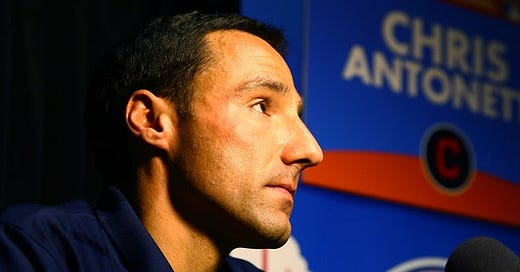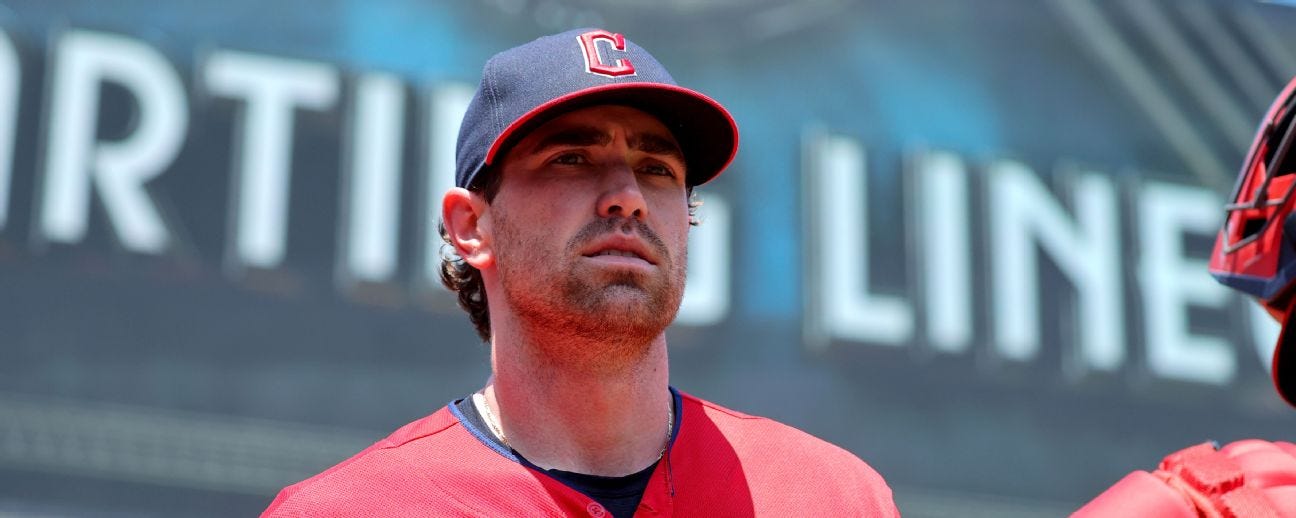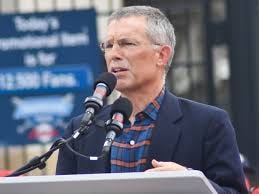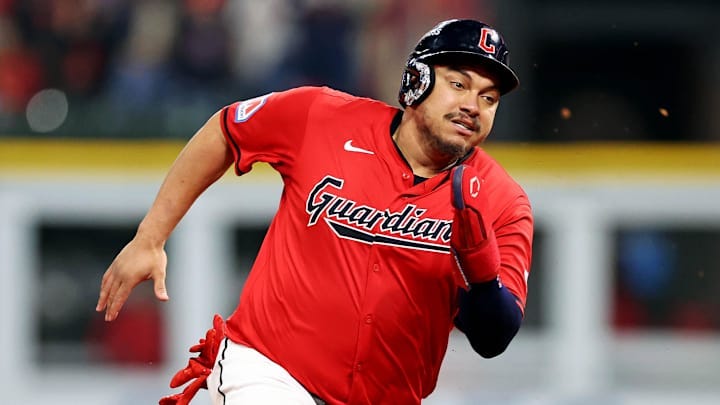Offseason Week 1: The Big Questions
Examining the big things Cleveland may do this offseason and some dates
With the World Series over we now face the long dark of Moria…I mean the baseball offseason. Over 100 days without baseball, a cold, bleak time of year where only the prospect of a big free agent signing or the Baseball Hall of Fame can keep us going over the course of the winter. Needless to say, this is among the most consequential off-seasons for Cleveland in recent memory in spite of most of the roster returning in 2025.
Consider where the team ended 2016: like the 2024 team most of the roster returned for 2017. However, the team faced far fewer weaknesses in the roster. With Jose Ramirez, Francisco Lindor, Michael Brantley, Carlos Santana and Jason Kipnis returning the offense was not a problem. Furthermore with Corey Kluber, Carlos Carrasco and Trevor Bauer also returning the starting rotation was set. Finally a core of Andrew Miller & Cody Allen ensured at least a strong back end for the ‘16 bullpen. The Edwin Encarnacion signing certainly helped, but was not a necessity.
In contrast the 2024 roster faces several challenges. The ‘24 offense is simply not as strong as the ‘16 offense: the ‘24 offense ranked 17th in wRC+ (a metric which measures the relative strength of a player’s offensive contributions: 100 is average), while in 2016 we ranked 9th. The starting rotation was basically set already in 2017 once 2016 ended, while this year we can only pencil in one starter for 2025 (Tanner Bibee). The only place we’re in better shape now than in 2016 is our bullpen, but bullpens are famously volatile.
More concerning for me is the state of our AL Central opponents. In 2016 the Kansas City Royals were in decline after their 2015 World Series win, the Twins lost 100 games, and the White Sox and Tigers were in states of flux. No other team in the Central would win 90 games besides us from ‘16-18. This season three other teams in the AL Central were in contention, and two more made the playoffs (the most of any division in baseball). Cleveland will need to work harder to retain its edge over our division, and that edge is weaker than it was in the past.
My biggest concern is the state of the team’s finances.
Question #1: How Much Will the Dolans Spend?
On the one hand the Dolans should be quite pleased with 2024: the team made the ALCS and played the max number of games at home in both series. The team also drew over 2M fans for the first time since 2017, and while I do not have access to the data I would bet the team did much better on merchandise sales this year than past years due to the new City Connect Jerseys which were released this season. This is before the team gets its portion of playoff revenue.
I estimate the team probably made at least an additional $20M thanks to the playoffs (before accounting for other costs, you can check my math here which only considers ticket and concession revenue). But while the Guardians may take home some extra cash from the playoffs, they will also generate less money in 2024 from cable fees. With the demise of the Diamond Sports Network the Guards are losing out on somewhere in the neighborhood of $40-50M in cable fees. Major League Baseball is taking over broadcasting rights for the Guardians, and we simply do not know how much money Cleveland will receive in 2025.
In 2024 the Guardians spent $106M on payroll according to SpoTrac, and entered 2024 with a $98M payroll according to Cot’s Baseball Contracts. Entering the year Cleveland has commitments to spend $43.17M on existing contracts (Jose Ramirez, Andres Gimenez, Myles Straw, Emmanuel Clase and Trevor Stephan), and is projected to spend between $91M and $110M depending on several factors.
It is difficult to say how much 2024 helped the Guardians finances, but every indication I can see is positive. But, given how much money teams made on their TV deals it is still plausible for the Dolans to bring in less money in 2025 compared to 2024. In short, unless the Dolans are prepared to spend a higher percentage of revenue on payroll: the Guardians may not have much financial wiggle room.
Question #2: Where Can the Guardians Cut Costs?
This question could be entirely moot depending on how much the Dolans are prepared to admit (and no they’re not telling us how much they will spend). But that does not mean the team cannot cut some dead weight from the roster, here are a few options:
Non-Tender Arbitration Eligible Players
Cleveland enters 2025 with numerous players eligible for arbitration (in alphabetical order): Sam Hentges, James Karinchak, Steven Kwan, Ben Lively, Triston McKenzie, Eli Morgan, Josh Naylor, Nick Sandlin, Lane Thomas. This group’s projected arbitration salaries, according to MLB Trade Rumors, is $36.1M. Obviously Cleveland will not want to cut all of these players, but there’s some potential dead weight on here. I think Cleveland could safely cut James Karinchak & Sam Hentges, and possibly even Nick Sandlin, without harming the roster. Neither James nor Sam pitched for Cleveland in 2024. Sam Hentges will miss all of 2025 with a shoulder injury. That will save Cleveland either $3.4M (Hentges & Karinchak) or $5M (Hentges, Karinchak & Sandlin) if all three are non-tendered. It’s also possible they could be retained, and then traded.
Trade Josh Naylor
There is no way Cleveland will non-tender Josh Naylor. He’s too valuable, even if they do not intend to keep him they can definitely trade him for something. But Josh Naylor’s current arbitration projection is between $10-12M. If the Guardians feel they cannot afford Josh Naylor, they could free up the most cash by finding a taker for his last year of arbitration.
Question #3: Will Cleveland Trade Josh Naylor
There are obvious cash reasons for Cleveland to trade Josh, despite him putting up his first full season in the majors which he was rewarded for with his first All-Star selection. He also hit the 30 Home Run plateau and the 100 RBI plateau; he is an offensive player Cleveland cannot really afford to lose. However, the team has options to replace him already on roster; they did not trade for Kyle Manzardo just for him to ride the bench, and David Fry can also play first base. Top prospect Ralphy Velazquez will eventually arrive in Cleveland, and he will also need playing time. For me, the question in a Josh Naylor is first: why? Why would Cleveland trade him? There are a couple of answers.
Answer 1: Because you Really Believe in Kyle Manzardo/David Fry
If Cleveland is trading Josh Naylor because they really believe in their other internal options, then this means Josh is expendable, but it also means they don’t have to trade him. Sure, it would be nice if Cleveland could open up more time for Kyle and Fry in the field and not just at DH but, as we saw in October and in September, it’s not like they cannot find a way to squeeze three good bats into the lineup if needed. So in this scenario, Cleveland may trade Josh Naylor but I would imagine they only do it if they can get something in return which helps us now.
What would that be? I am not sure. If you look at the free agent market there are already several players at least similar to Josh on the market, There are also several other trade candidates too, on the MLB Trade Rumors top trade candidates there are five other first baseman types who could find themselves on the chopping block (Luis Arraez, Cody Bellinger, Yandy Diaz, Nathaniel Lowe & Ryan Mountcastle). Jorge Soler, a DH, was already traded to the Angels.
I actually think the Soler trade is similar to what Cleveland can expect in a Josh Naylor trade. They could swap out Naylor (who is making $10-12M) for a pitcher, perhaps, who can help them solidify our rotation or bullpen in 2025. What could that look like? A few off the cuff ideas
-Trade him to the New York Yankees. The Yankees need a new first baseman with Anthony Rizzo likely gone, and they have several older starters who could interest Cleveland. Marcus Stroman is making $18.5M, and would be pricey, but he’s probably the kind of pitcher Cleveland wants (solid, able to take the ball in October, and a good bet to make around 30 starts), maybe New York could part with Nestor Cortes too.
-Trade him to the Milwaukee Brewers. The Brewers tried to make Rhys Hoskins work at first base this year and it didn’t pan out well. I could see them trading Aaron Civale, who they got from Tampa at the deadline, for some offensive upgrades. Civale is not a great starter, but he’s a solid one and would fit our budget.
-Trade him to the Arizona Diamondbacks. The D-Backs missed the postseason after shocking baseball and winning the NL Pennant last year. But Christian Walker and Joc Pederson are both leaving via free-agency. Their owner also publicly criticized Jordan Montgomery for his terrible year. I think Montgomery will exercise his player option to stick in Arizona, and I could see them dumping him. This would require the D-Backs to pick up part of Jordan’s hefty salary, but as recently as 2023 Jordan was a frontline starter and a Texas Rangers savior in October.
I have not dug too deeply into this, but a trade like this could be possible.
Answer 2: You think Josh Naylor Will Decline
Another reason to dump Josh is because you don’t believe he can continue his performance. That’s a reasonable take, Josh has a larger body and is not athletic. He can play an OK first base but he’s really better suited for DH duties. Furthermore while he did put up some good counting stats, his rate stats declined from ‘23 to ‘24:
2023: .308/.354/.489 (.181 ISO, 130 OPS+)
2024: .243/.320/.456 (.213 ISO, 118 OPS+)
Overall, Josh was still a productive hitter, nor am I suggesting that I do not think he can at least replicate his 2023 numbers. For what it’s worth, 2023 reminds me of 2022: .256/.319/.452, so I am not panicked about how he hit overall. That being said, I could also see the case that we’ve seen the best from Josh Naylor.
Looking at his underlying stats, I don’t see a ton which panics me. His hard hit rate is about the same as it has been (43% in ‘22, 41.4% in ‘23, 40.9% in ‘22), his exit velocity went up (89.3 in ‘22, 89.1 in ‘23, 89.9 in ‘24), and his strikeout rate is literally at his career average of 16.6%. His walk rate at 9.2% is the highest of his career. But again, I think the concern with Josh is not his performance numbers, but his physical projection. Is Josh the sort of player you want to invest in for 2025?
In this scenario, it almost does not matter what you get back for Josh: you want to allocate those dollars elsewhere on the roster, probably in a pitcher or an outfielder.
Answer 3: You Really Need the Cash
In this scenario it does matter, to a degree, what you get back, but if they team really needs to save Josh’s $10-12M in order to make the payroll Dolans want to see, I think the Guardians will be in trouble regardless of what they get back.
Everything Else Stems from These Questions
It’s tough to project what Clevleand will do until we know the lay of the land. Ideally Cleveland would proactively work to sign a few starting pitchers to shore up the rotation, and add a bat somewhere to lengthen the lineup. However, given the uncertainty surrounding payroll, and how they address it, it’s difficult to decide how they proceed. I can see this team potentially adding some pricier players if the Dolans decide (as they did in 2017) that the time is now. I can also see an offseason more like the 2019-20 offseason (or 20-21 offseason) where they try to “thread the needle” by trading more expensive players, and replacing them with younger players holding more upside.
Let’s see how the team addresses their arbitration players in the beginning of the offseason before we predict more moves. Some important dates to keep an eye on:
November 3rd: Gold Glove Awards Announced
Tanner Bibee, Andres Gimenez, Steven Kwan and Jose Ramirez are up for Gold Gloves. I expect Kwan, Gimenez and perhaps Bibee to win. I really hope Jose wins one, but I think it goes to Alex Bregman.
November 12th: Silver Slugger Awards Announced
Jose Ramirez should take home another Silver Slugger
November 22nd: Non-Tender Deadline
By this date we will know if Cleveland intends to tender all of their arbitration eligible players a contract, this is perhaps the most important deadline.
December 8-11: Winter Meetings
We may not know if Cleveland makes any moves, but we will start getting rumors heating up if nothing else
January 9th: Arbitration Deadline
This is the deadline for arbitration eligible players and their teams to exchange salary numbers. Typically Cleveland signs their players before this deadline, and avoids arbitration
Happy Offseason everyone, 100 days until pitchers and catchers report







